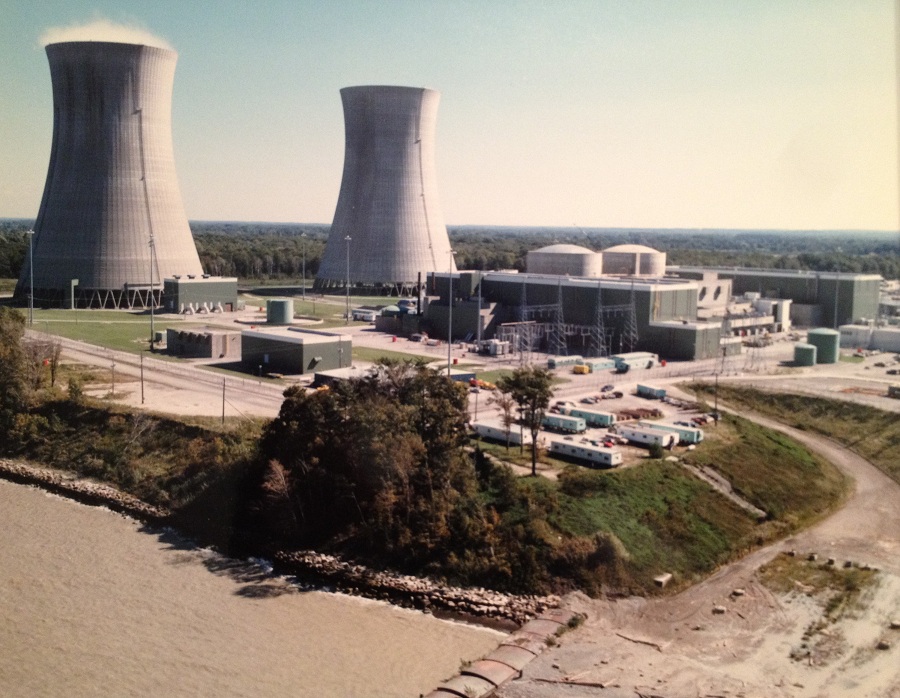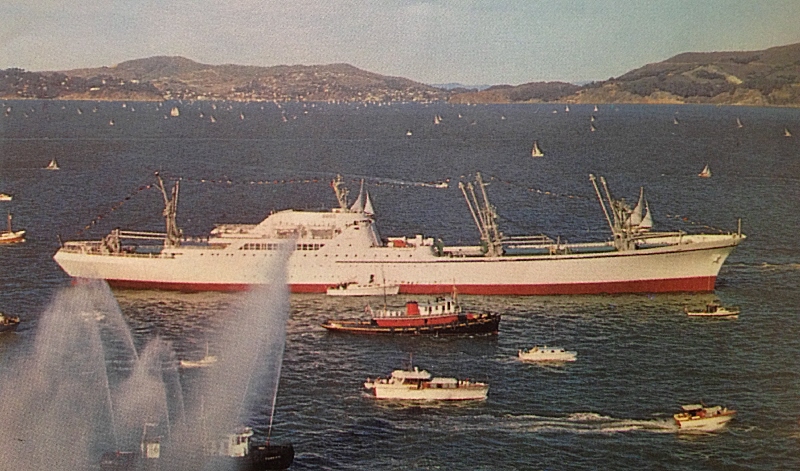"Nuclear Energy" - National Nuclear Science Week, Day 3 (October 22)
 The third day of National Nuclear Science Week is focused upon the production of energy by nuclear means-and that means energy that can do work for man. Electric power, steam for heating businesses and homes, and mechanical power for propelling ships are perhaps the best known examples of man's use of nuclear energy.
The third day of National Nuclear Science Week is focused upon the production of energy by nuclear means-and that means energy that can do work for man. Electric power, steam for heating businesses and homes, and mechanical power for propelling ships are perhaps the best known examples of man's use of nuclear energy.

The classic image of a modern nuclear power station, represented by Perry Nuclear Plant, Ohio. Photo in Will Davis collection.
Regardless of model or type, all nuclear reactors produce heat; this is how we get useful work from them. In the case of a nuclear power plant, the heat is used to boil water into steam, which then is used to run very large turbines; these generate power for thousands of businesses, homes, street lights, traffic lights-everything you see that receives electric power. And did we say "large?" A typical turbine generator at a nuclear plant can be 200 feet long; the parts inside the turbine that rotate can have a total mass of around 700 tons, and the machine overall can develop from 900 MW (megawatts) to 1400 MW. That's well over one million horsepower!
The U.S. government has two primary offices related to nuclear energy. The Department of Energy's Office of Nuclear Energy develops and promotes nuclear power technologies, while the Nuclear Regulatory Commission has the responsibility of oversight of all nuclear facilities in the United States.
••••••••••
For more information on the development of nuclear energy:
The path to developing useful work from splitting the atom (known as "fission") began with Enrico Fermi's "atomic pile," the CP-1, which was the first working nuclear reactor. Click here to read about the effort, and its 70th anniversary.
The first full-scale nuclear reactor of any sort was actually not used for power production, but rather was part of the US Manhattan Project. Still, this complicated and large machine proved out concepts that would be used in power reactors. Click here to read about this reactor, the Hanford B Reactor.
The first nuclear reactor plant intended for the production of useful power alone (propulsion and electricity) was the STR Mark I, which was the prototype or dress rehearsal for the world's first nuclear powered vessel, USS NAUTILUS. See some details of the prototype's construction at this link.
 Nuclear energy has been employed to power hundreds of military vessels; it's also been used to propel at least three merchant ships. The first, NS SAVANNAH, is shown. Illustration courtesy NS Savannah Association, Inc.
Nuclear energy has been employed to power hundreds of military vessels; it's also been used to propel at least three merchant ships. The first, NS SAVANNAH, is shown. Illustration courtesy NS Savannah Association, Inc.Nuclear energy has been employed to power hundreds of military vessels; it's also been used to propel at least three merchant ships. The first, NS SAVANNAH, is shown. Illustration courtesy NS Savannah Association, Inc.
General Electric's Vallecitos boiling water reactor was part of the effort that led to the first measurable commercial sale of nuclear generated electric power in the United States. Click here to read about this project and see a film on it.
President Dwight Eisenhower's "Atoms For Peace" program led directly to the development of civilian nuclear power in the United States. ANS Nuclear Cafe described that program in a three part feature, which can be found at the following links: Part 1; Part 2; Part 3.
(Will Davis for ANS Nuclear Cafe.)








